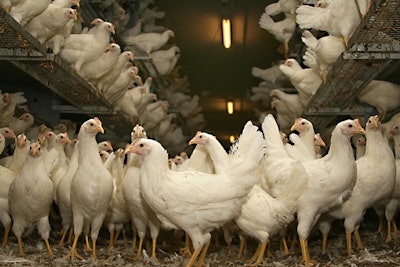
Layer welfare can be difficult to manage in cage-free environments. Specific light plans that use pulsed alternating wavelengths can help producers manage stress-induced behaviors in specialized housing systems.
In a recent research project conducted at Colorado State University, layer hens exposed to pulsed light technology displayed an increased interest in interacting with novel objects. The novel object test is used to quantify levels of fear or stress.
“The feedback that we received is that the birds are much calmer. When it comes to quantifying the calmness of the bird, that’s a lot more difficult to do. That’s why we’re doing things like novel object studies,” explained Jason Suntych, COO and co-founder, Xiant Technologies.
“The idea is that a stressed or scared bird is less likely to approach a new object in their environment.”
Using light to impact temperament and behavior
Pulsed alternating wavelength light technology targets the underlying chromophores in poultry, which are the molecules in biology responsible for accepting light to give indications of time of day, seasonality and latitude to the animal.
The light pulses in the order of microseconds, faster than the ability of humans or animals to perceive it. This results in a bulb that appears to be constantly on, but is only operating between one and 20 percent of the time.
Addressing cage-free concerns
The open environments of cage-free housing can result in fights for dominance among hens, resulting in injury and stress. In the past, operators would dim lights or modify the color spectrum to keep birds calm.
“Problems are easier to manage in caged birds,” Brock Peterson, the former President of Opal Foods, said. “It’s a much more difficult scenario in cage-free.”
The smart bulb technology has been tested on more than 3.5 million pullets and layers living in commercial housing where shifts in hen temperament and behavior, as well as improvements in feed conversion and egg production, were seen.
“The welfare of the bird is probably better than it was prior to the light,” Peterson added. “Are they highly reproductive, are they happy, are they using their feed and water efficiently? All these measurements that we’ve seen so far point to yes.”


















